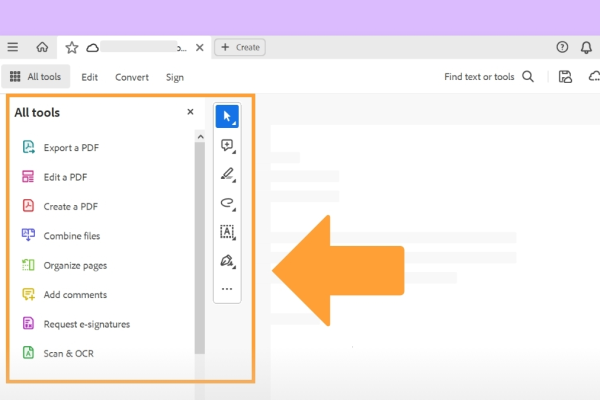How to Copy a Website? Replicating or copying a website becomes necessary in the dynamic field of web development for a variety of reasons. Whether you’re revamping a website, backing up data, or switching to a new platform, the process calls for meticulous preparation, execution, and taking a number of variables into account. The finest methods, resources, and crucial factors for successfully replicating a website while retaining SEO, upholding design integrity, and complying with legal obligations will all be covered in this article.
How to Copy a Website:
Comprehending the Procedure:
It’s important to comprehend the procedures required in replicating a website before seeing the tools and techniques:
Assessment:
Start by analysing the functionality, design, and organization of the website you want to imitate. Determine which essential components require duplication.
Material extraction:
It involves removing all of the original website’s text, graphics, video, and other material. This might entail employing automated technologies or hand extraction.
Replication:
Replicating the website’s HTML, CSS, JavaScript, and any backend functionality is known as code replication. Make sure the architecture of the original site is reflected in the new codebase.
Recreation:
Recreate the website’s layout, typography, colour palette, and branding aspects through design replication.
Implementation of Functionality:
Include all forms, interactive elements, and dynamic material from the original website.
Testing and Debugging:
Make sure the duplicate website is fully tested to find and address any errors, inconsistencies, or compatibility problems.
Replication of Websites: The Best Practices
Respect intellectual property and copyright:
Verify that you are legally permitted to duplicate the text and visual components of the website. Obtain permission before utilizing any work, or use it under the proper licenses to avoid plagiarism and copyright violations.
Preserve Design Integrity:
Try to faithfully recreate the original website’s design. To correctly duplicate the user experience, pay attention to aspects like font selections, layout, spacing, and visual hierarchy.
Optimise for speed:
Reduce the number of HTTP requests, compress pictures, and optimise code to get the best possible website speed. Websites that load quickly improve both SEO rankings and user experience.
Put responsive design into practice
By making a replica that easily adjusts to various screen sizes and devices. Make mobile responsiveness a top priority in order to serve the expanding mobile user base.
Make that the website is accessible to all users, including those with impairments, by making it accessible through replication. To guarantee compliance, adhere to accessibility rules like the WCAG (Web Content Accessibility rules).
Preserve SEO Elements:
By keeping important components like meta tags, structured data, internal links, and URL structure, you may preserve or even enhance SEO. Move outdated URLs to their matching new ones in order to avoid SEO penalties.
Resources for Website Replication:
A macOS application called Site Sucker downloads whole webpages so users may browse them offline. It is helpful for removing files and material from websites.
HTTrack:
An open-source, free programme for copying websites that works with Linux, macOS, and Windows. It builds a local replica of the content organization of a website.
WordPress Duplicator:
This plugin makes it easier to duplicate WordPress websites. It makes website cloning and migration simple.
Git Version Control:
Track changes and work together on website replication projects by utilizing version control tools like as Git. It promotes teamwork and aids in maintaining code integrity.
Browser Developer Tools:
You may examine and duplicate some aspects of a website’s layout and operation using the built-in developer tools found in most modern web browsers.
A Legal and Ethical Perspective:
Copyright Compliance:
When stealing text, photos, or design components from websites, abide by copyright laws and intellectual property rights. Get consent or make use of content with the proper licences.
Terms of Service:
Check that any limitations on copying or duplicating content are followed by reading the source website’s terms of service and use guidelines.
Data Protection:
When managing personal information retrieved from the source website, follow data protection laws like the General Data Protection Regulation (GDPR).
Trademark Considerations:
To avoid accusing of trademark infringement, refrain from utilizing trademarks, logos, or branding materials without permission.
Attribution and Credits:
Give due credit and attribution to the original creators of any material or design elements that you use from the original website.
FAQs regarding Replication of Websites: Tools, Best Practices, and Considerations
Is it permissible to duplicate a webpage?
A: It relies on a number of things, such as intellectual property rights, copyright laws, and the original website’s terms of service. Make sure you have the legal authority to duplicate or reproduce the content and design aspects of websites, and get permission if needed.
What happens if you duplicate a webpage without permission and violate someone else’s copyright?
A: Violations of copyright can result in litigation and financial penalties, among other legal repercussions. It may also harm your credibility and reputation as a developer or company. Prior to duplicating any content from a website, always abide by copyright rules and acquire the required consent.
How can I make sure that the design integrity of the copied website is maintained?
A: Pay special attention to aspects like layout, typography, colour scheme, and branding elements in order to preserve design integrity. Make precise copies of design elements by inspecting and using tools such as browser developer tools. Make an effort to accurately replicate the original website’s user interface.
Is it possible to replicate websites with the use of tools?
A number of technologies, such as WordPress Duplicator, HTTrack, Site Sucker, and version control systems like Git, can help in website duplication. During replication projects, these technologies provide content extraction, website cloning, and code integrity maintenance.
What factors affect SEO when replicating a website?
A website’s meta tags, structural data, internal links, and URL structure should all be preserved while duplicating it. Move outdated URLs to their matching new ones in order to avoid SEO penalties. Make sure the duplicate website adheres to SEO best practices in order to preserve or raise its search engine rankings.
How can I be sure that replicating a website complies with ethical and legal requirements?
A: Check copyright laws, the original website’s terms of service, and data protection rules like GDPR to make sure you’re in compliance. Make sure you have the correct permissions before copying any information from websites, honor intellectual property rights and trademarks, and give credit where credit is due. Throughout the replication process, give top priority to user privacy, data protection, and ethical principles.
Also Read: Ultimate Guide: Finding the Closest Airport to Disney Land
Conclusion:
In conclusion, website copying is a complex operation that calls for meticulous preparation, technological know-how, and adherence to moral and legal guidelines. Through adherence to recommended procedures, utilization of suitable resources, and evaluation of crucial elements like aesthetic consistency, search engine optimization preservation, and legal ramifications, developers may proficiently duplicate websites while upholding professionalism and moral principles. To guarantee the success of your project, keep in mind to give user experience, performance, and compliance first priority throughout the replication process. This was all about How to Copy a Website.





